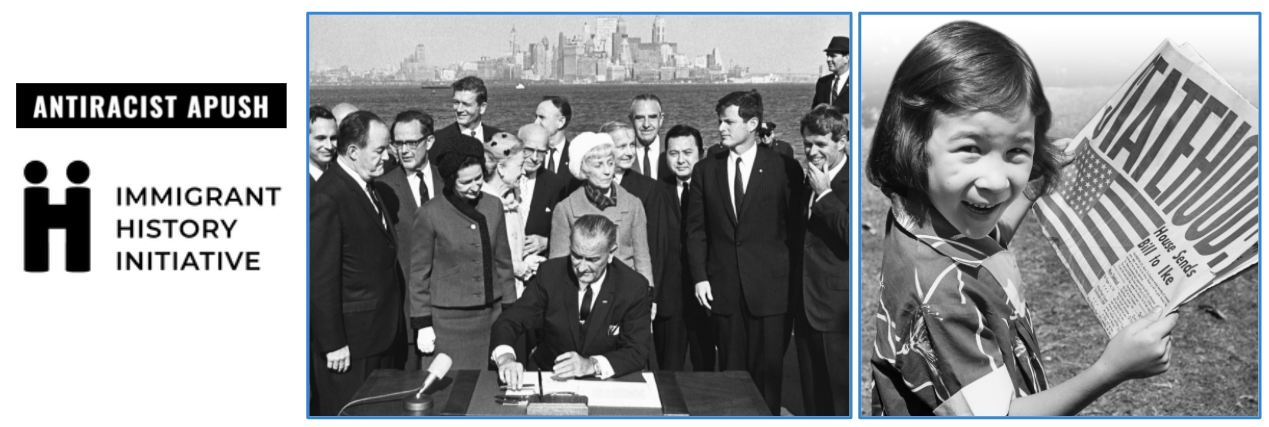TOPIC 8.9 The Great Society
the 1965 Immigration Act and “Model Minority” Mythology
APUSH Key Concept: KC-8.3.I.C, “Immigrants from around the world sought access to the political, social, and economic opportunities in the U.S., especially after the passage of new immigration laws in 1965.”
Objective 1: Students will be able to explain why American popular culture shifted from “Exclusion” to the “Model Minority” mythology mindset
Objective 2: Students will be able to explain how the Immigration Act of 1965 dramatically changed American demographics
This Key COncept in An Antiracist classroom:
“The ‘model minority’ stereotype continues to uphold white supremacy, hindering our ability to address social and economic issues plaguing the Asian community. The stereotype also limits our ability to address anti-Blackness by ignoring the diversity of the Asian American experience and delegitimizing Black demands for societal change.” - Dr. Ellen Wu
The passage of the 1965 Immigration Act was a major antiracist victory in American history. The old racist immigration policies were wiped out as part of LBJ’s Great Society and America’s demographics were changed forever. This key concept also provides an important opportunity to discuss harmful “model minority” mythology as well as a racist myth central to modern American concepts of race: Racism is not a response to the actions of certain groups, rather, it is created by policy. Students will trace the policy changes and historical developments that resulted in the pervasiveness of the “model minority” myth. The myth upholds white supremacy, hides the diversity of the Asian American community, and is used as a weapon against Black liberation movements.
Notes
This lesson is the 4th in a series produced with the Immigrant History Initiative and builds off of the following lessons (1) Chinese Workers on the Transcontinental RR, (2) Racist Reactions to Chinese Immigration, and (3) Contextualizing the 1924 Immigration Act. Throughout the lesson, students will transition back and forth between whole-class instruction and small group discussion. The class wraps up with an important discussion of these key questions:
How did the 1965 Immigration Act change American immigration policy?
Was the creation of the “model minority” a positive development for the Asian American community? In what ways does it impact other communities?

